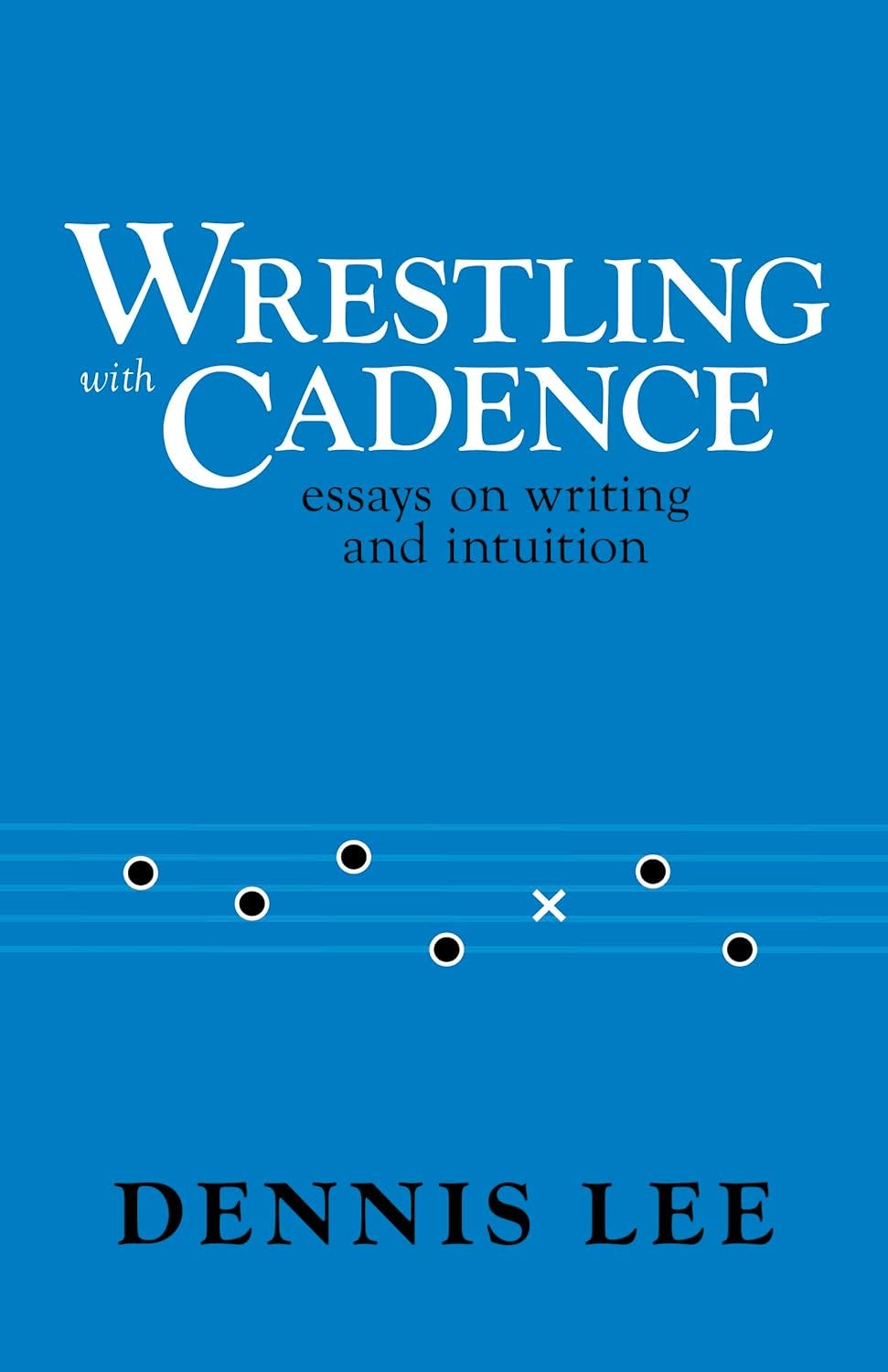Wrestling With Cadence by Dennis Lee
Essays on Writing and Intuition
Wrestling with Cadence: Essays on Writing and Intuition by Dennis Lee includes ten essays written by Lee over the course of five decades. Some essays were included in an earlier form in Lee’s 1998 collection Body Music, though they have been significantly altered—in some cases, as Lee notes in the preface to Wrestling with Cadence, almost beyond recognition—based on Lee’s experiences in the intervening years.
“Because of Lee’s keen insights and his willingness to openly share his experiences, Wrestling with Cadence has much to offer.”
One of the book’s main thrusts is discussing something Lee calls “cadence.” This is described in a press release about the book as a “tumble of pre-verbal energy [Lee] senses intuitively.” Cadence has played an important role in Lee’s writing. Though it’s a difficult concept to explain fully, Lee does his best to articulate it so that other writers might recognize and tap into it when they experience a similar feeling.
Lee notes that for a period of time his writing was blocked as he wrestled with what it means to be Canadian and write from a Canadian space, in a country that is sometimes overshadowed by the influences of our neighbours to the south and the British and continental influences in our past.
An essay titled “Roots and Play” is devoted to Lee’s thoughts about writing children’s literature. In this essay, Lee discusses nursery rhyme structure and why we find it so appealing, and the importance of tapping into one’s inner child when writing children’s poetry. He also shares how the idea of the poem “Alligator Pie” came to him.
In other essays, he discusses the value of including multiple voices in the same poem, and the value of striving for immediacy, reducing the distance between writer and reader.
Wrestling with Cadence includes Lee’s essays on Al Purdy and Gaston Miron. In the essay on Purdy, Lee traces Purdy’s career. He also analyzes particular poems and offers insights into how Purdy’s body of work shows his evolution as a poet. The essay on Miron was written for a special “Gaston Miron” issue of the journal Liberté . The essay came out in 1997, the year after Miron died, and includes Lee’s personal memories of Miron.
Lee uses subheadings, numbered sections, or symbols to break up the essays. Sometimes a combination of these approaches is used. This makes the text feel more welcoming, and makes it easier to absorb the content. An introduction is provided at the start of each essay, providing some of the background. This was a feature I appreciated.
Some essays were conceptual, while others were more practical. The chapter titled “Body Music: Notes on Micro-Rhythm” provided insights about the use of line breaks and varied margins in free verse. Reading this chapter armed me with the tools to tinker constructively with some of my own in-progress poems.
Near the end of the book, Lee provides notes on the essays. These notes outline the inspiration for the pieces, when and where they appeared in their original form, and other relevant facts.
Because of Lee’s keen insights and his willingness to openly share his experiences, Wrestling with Cadence has much to offer. Lee’s discussion of how his writing has changed with time illustrates the importance of remaining open to new techniques and approaches.
Wrestling with Cadence would be of value to writers who are on the hunt for deeper insights into the writing process or a better understanding of some of the intuitive impulses they may be experiencing in their own work. It should also appeal to those familiar with Lee’s vast body of work who are interested in doing a deeper dive into some concepts and approaches that underlay his writing.
About the Author
Dennis Lee is among the finest poets now working in English. The author of more than forty books, he is highly regarded for his meditative and erotic poetry, as well as his unforgettable collections for young people such as Alligator Pie. He wrote the song lyrics for Jim Henson’s hit children’s series, Fraggle Rock, and in 2001 was named Toronto’s first poet laureate. Heart Residence, his collected poems, was published in 2017. He lives in Toronto with his wife, the novelist Susan Perly.
About the Reviewer
Lisa Timpf lives in Simcoe, Ontario, where she writes poetry, book reviews, short stories, and creative nonfiction. Lisa’s speculative poetry collections Cats and Dogs in Space (2025) and In Days to Come (2022) are available from Hiraeth Publishing. Lisa is a member of SF Canada and the Science Fiction and Fantasy Poetry Association. You can find out more about Lisa’s writing projects at http://lisatimpf.blogspot.com/. Lisa is also on Bluesky, @lisatimpf.bsky.social
Book Details
Publisher: Stonehewer Books
Publication date: Sept. 15 2025
Language: English
Print length: 234 pages
ISBN-10: 1069236209
ISBN-13: 978-1069236203




